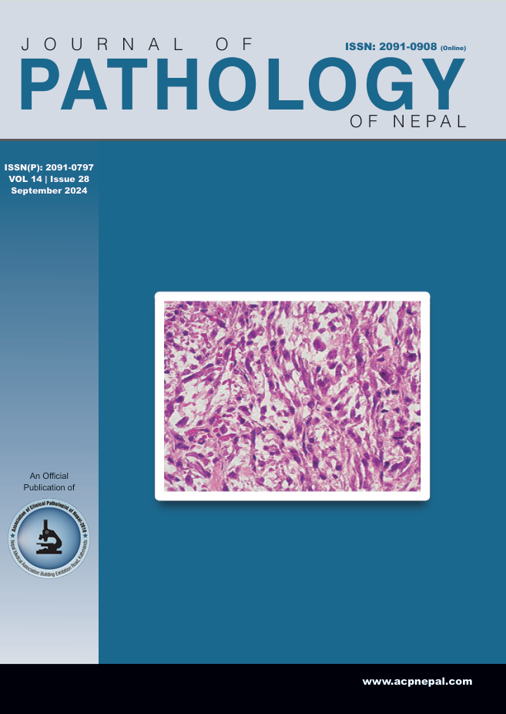Biochemical profile of urinary calculi in a tertiary care centre
DOI:
https://doi.org/10.3126/jpn.v14i2.72104Keywords:
Urolithiasis, biochemical, calculi, calcium oxalate, carbonate apatite, uric acidAbstract
Background: Urolithiasis is the most common urological disease worldwide. It is multifactorial in origin and influenced by the physical and chemical conditions of the urinary system. The most common type of stone contains calcium in combination with either oxalate or phosphate. Finding the biochemical profile of urinary calculi and estimating the propensity towards its relapses will help to reduce the recurrence of stone formation.
Materials and methods: A hospital-based study was carried out in the Department of Urology of Nepal Medical College Teaching Hospital which included 114 cases of urinary calculi sent for biochemical analysis. The association between biochemical composition and relevant socio-demographic and clinical variables was analyzed using the Chi-square test.
Results: The mean age of the patients with urinary calculi was 35.91 ± 12.254 years and more commonly seen in male patients (66.7%). Pain abdomen (93%), frequency (22.8%), and hematuria (17.5%) were the main complaints. Right-sided calculi were more common (53.5%) and the proximal ureter (46.5%) was the most common site. Calcium oxalate was the major compound in urinary calculi with 47.4% pure calcium oxalate calculi and 52.6% mixed calculi. An association between the composition of calculi and median age, gender, and site area was statistically not significant.
Conclusions: Calcium oxalate is the major compound in urinary calculi in both pure and mixed form. More nutritional and metabolic studies are required to evaluate the modifiable factors so that the complications associated with urinary calculi can be limited.
Downloads
Downloads
Published
How to Cite
Issue
Section
License
Copyright (c) 2024 The Author(s)

This work is licensed under a Creative Commons Attribution 4.0 International License.
This license enables reusers to distribute, remix, adapt, and build upon the material in any medium or format, so long as attribution is given to the creator. The license allows for commercial use.




